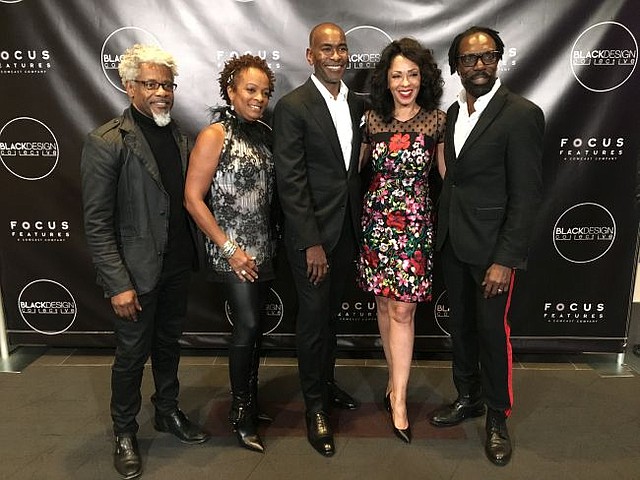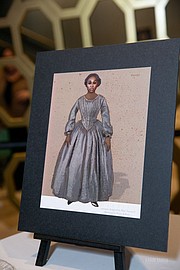Star Costume Designer Paul Tazewell Speaks at Black Design Collective’s "Harriet" Screening
EVENTS
From left, TJ Walker, Vanessa Bell Callaway, Paul Tazewell, Debra Martin Chase and Kevan Hall at Black Design Collective screening for Harriet. Images by Karim Saafir Photography
As of Friday, December 20, 2019
It was the last 2019 event for Black Design Collective, a Los Angeles headquartered non-profit that supports African American designers and mentors student creatives.
BDC treated its members and friends to a Dec. 17 screening of "Harriet" at Regal LA Live in downtown Los Angeles. The Focus Features film tells the story of Harriet Tubman, abolitionist and escaped slave who rescued 70 enslaved people before the American Civil War.
After the screening, BDC co-founders Kevan Hall and TJ Walker introduced a panel, which told the inside story of the making of the film. Speaking were film producer Debra Martin Chase, Vanessa Bell Calloway—the actress who played Harriet Tubman’s mother, and Paul Tazewell, the film’s costume designer. The panel talked about the long road bringing the film to the screen, and, of course, how it was costumed by Tazewell. He designed costumes for the Broadway production of "Hamilton," as well as the upcoming Steven Spielberg remake of "West Side Story."
The "Harriet" script remained unproduced for a number of years, Martin Chase said, because Hollywood wasn’t ready for a unique historical epic about an enslaved woman. Films with women and black people as heroic leads, such as "Wonder Woman," "Black Panther" and "Hidden Figures," had to be proven box office successes before anyone would take a gamble on them, she said.
Putting together the film's costume designs took a bit of hustle, according to the panel. When "Harriet" was being produced, it had to compete for 19th-century vintage garments with a couple of other films which were being produced during the same time. One of them was the highly anticipated remake of "Little Women" by Academy Award nominee Greta Gerwig.
But the "Harriet" designer pulled off a few sartorial coups. Tazewell sourced vintage pieces such as an 1830s gown that Janelle Monae wore in "Harriet."
The look of the film also was inspired by images of slaves depicted in 19th-century daguerreotypes. The costumes also told the story of Tubman’s journey of an enslaved person who escaped to Philadelphia and became an activist and someone who controlled her own destiny, Tazewell said.
“We see how clothing deteriorated off of her body,” he said of scenes where Harriet escapes through wilderness to find freedom. “Then she goes to Philadelphia and recreates herself as a woman.”
Tazewell said that he wanted to capture a specific spirit with his costume design for the film.
“It was about clothes in movement, and how it underscores the emotional truth the story was telling,” Tazewell said.

